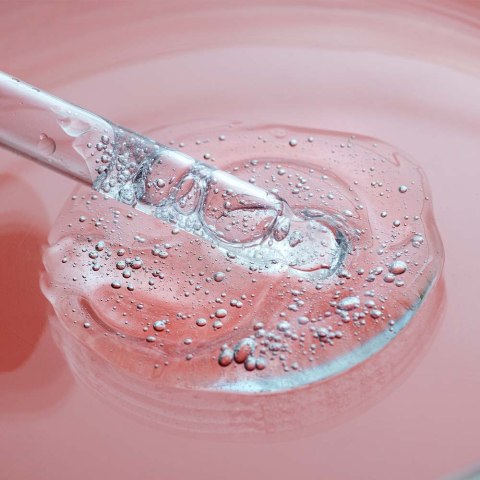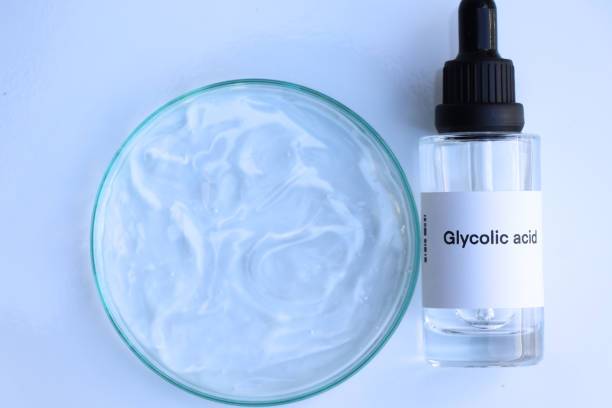Glycolic Acid: The Ultimate Guide to Radiant and Youthful Skin
Glycolic acid is a powerhouse skincare ingredient known for its ability to exfoliate, brighten, and rejuvenate the skin. As a type of alpha hydroxy acid (AHA) derived from sugarcane, it has the smallest molecular structure among AHAs, allowing it to penetrate deeply into the skin for maximum effectiveness. Whether you're looking to tackle acne, hyperpigmentation, or fine lines, glycolic acid can be a game-changer in your skincare routine.
What is Glycolic Acid?
Glycolic acid is a water-soluble AHA that works by gently dissolving the bonds between dead skin cells, promoting exfoliation, and revealing fresher, more radiant skin underneath. It is commonly found in cleansers, toners, serums, peels, and moisturizers, making it a versatile ingredient suitable for various skincare concerns.

Benefits of Glycolic Acid for Skin
-
Exfoliates and Smooths Skin – Glycolic acid effectively removes dead skin cells, leaving the skin softer, smoother, and more even-toned.
-
Boosts Collagen Production – Regular use stimulates collagen synthesis, reducing the appearance of fine lines and wrinkles.
-
Brightens Complexion – Fades dark spots, sun damage, and hyperpigmentation for a more radiant and youthful glow.
-
Unclogs Pores and Reduces Acne – Helps prevent breakouts by keeping pores clean and minimizing excess oil production.
-
Improves Skin Texture – Smooths rough patches and refines the skin’s surface for a polished, healthy look.
-
Enhances Product Absorption – Prepares the skin to absorb other skincare ingredients more effectively.
-
Hydrates and Balances – Unlike harsh scrubs, glycolic acid maintains moisture while exfoliating, preventing excessive dryness.

How to Use Glycolic Acid in Your Skincare Routine
Glycolic acid is a powerful alpha hydroxy acid (AHA) that can transform your skin, but it’s essential to use it correctly to avoid irritation and maximize its benefits. Here’s how to safely and effectively incorporate glycolic acid into your skincare routine:
1. Start with a Low Concentration
If you're new to glycolic acid, begin with a product that contains 5% to 7% concentration. This allows your skin to build tolerance gradually and helps minimize the risk of redness or peeling. Over time, you can increase to higher concentrations, typically found in professional-grade products or peels.
2. Choose the Right Product Type
Glycolic acid is available in various forms—cleansers, toners, serums, pads, and peels. For beginners, a glycolic acid toner or cleanser used a few times a week is a gentle way to get started. Serums and overnight treatments offer deeper exfoliation for those with more experience.
3. Apply on Clean, Dry Skin
After cleansing your face, wait a few minutes to ensure your skin is completely dry. This reduces the chance of irritation. Apply your glycolic acid product using clean hands or a cotton pad, depending on the formulation.
4. Follow with a Hydrating Moisturizer
Because glycolic acid can be drying, always follow up with a nourishing moisturizer to soothe the skin and strengthen your skin barrier. Look for ingredients like hyaluronic acid, ceramides, or aloe vera for added hydration.
5. Use Sunscreen Daily
Glycolic acid increases your skin’s sensitivity to the sun, so applying broad-spectrum SPF 30 or higher every morning is non-negotiable. This protects your skin from UV damage and prevents dark spots from forming.
6. Don’t Overdo It
Limit glycolic acid use to 2–3 times per week if you're just starting. Using it too frequently can strip your skin and cause irritation. Once your skin builds tolerance, you may increase usage as needed.
7. Avoid Mixing with Harsh Actives
Avoid using glycolic acid alongside other potent actives like retinol, vitamin C, or salicylic acid—especially in the same routine. This reduces the risk of over-exfoliation and irritation.
8. Listen to Your Skin
Pay attention to how your skin reacts. Tingling or mild redness is normal at first, but if you experience intense burning, peeling, or prolonged discomfort, reduce frequency or stop use temporarily.

Who Should Use Glycolic Acid?
Glycolic acid is a versatile skincare ingredient, but it’s not for everyone. Understanding who can benefit the most from glycolic acid helps ensure it works safely and effectively for your skin type and goals.
1. People with Dull or Uneven Skin Tone
If your skin looks tired, lackluster, or has uneven pigmentation, glycolic acid can help. Its exfoliating properties remove dead skin cells that make the complexion appear dull, revealing fresher, more radiant skin underneath.
2. Individuals with Hyperpigmentation or Dark Spots
Glycolic acid is highly effective in fading dark spots, sun damage, and post-acne marks. Regular use can promote a more even skin tone by accelerating skin cell turnover and inhibiting melanin buildup in the skin.
3. Those with Fine Lines and Aging Skin
Because it stimulates collagen production and improves skin texture, glycolic acid is a great addition to anti-aging skincare routines. It helps soften the appearance of fine lines, smooth rough patches, and maintain youthful skin.
4. Acne-Prone Skin Types
Glycolic acid helps keep pores clear by exfoliating dead skin and reducing buildup that can clog them. It’s especially useful for those dealing with blackheads, whiteheads, or mild breakouts. It also reduces post-acne scarring and discoloration.
5. People with Oily or Combination Skin
This acid can help regulate oil production by balancing the skin’s surface. It removes excess oil and improves texture without leaving the skin overly dry, making it ideal for oily or combination skin types.
6. Experienced Skincare Users
Glycolic acid is a powerful active ingredient. People familiar with chemical exfoliants or AHAs may find glycolic acid beneficial in addressing multiple skin concerns at once, including texture, tone, and clarity.
Potential Side Effects of Glycolic Acid
While glycolic acid offers powerful benefits for the skin, it's important to understand that it’s a potent active ingredient. Like many chemical exfoliants, glycolic acid can cause side effects, especially if used incorrectly or in high concentrations.
1. Skin Irritation or Redness
One of the most common side effects is mild irritation or redness, particularly when you’re new to glycolic acid or using a strong formulation. This can feel like a burning or tingling sensation, which may subside as your skin adjusts.
2. Dryness or Peeling
Since glycolic acid works by removing the top layer of dead skin cells, some users may experience dryness, flaking, or peeling. This is a normal part of the exfoliation process, but can be minimized by starting with a lower concentration and using a good moisturizer.
3. Increased Sun Sensitivity
Glycolic acid can make your skin more sensitive to UV rays. If you're using it regularly without sunscreen, you're at a higher risk of sunburn and further pigmentation issues. Always pair glycolic acid with a broad-spectrum SPF 30 or higher.
4. Breakouts or Purging
Some users might experience temporary breakouts or purging as glycolic acid brings congestion to the surface. This usually clears up within a few weeks, but it can be concerning if you're not expecting it.
5. Allergic Reactions
Though rare, allergic reactions such as itching, swelling, or hives can occur. Always perform a patch test before incorporating glycolic acid into your skincare routine, especially if you have sensitive or allergy-prone skin.
6. Over-Exfoliation
Using glycolic acid too frequently or combining it with other exfoliating agents (like salicylic acid or retinoids) can lead to over-exfoliation. This weakens the skin barrier, leading to sensitivity, inflammation, and long-term damage if not addressed.
How to Minimize Side Effects
Start with low concentrations (5–7%) and use 1–2 times per week.
Follow up with a hydrating serum or moisturizer.
Never skip sunscreen during the day.
Avoid mixing glycolic acid with other strong actives unless recommended by a skincare professional.
Conclusion:
Glycolic acid is an effective exfoliant, but using it responsibly is key to getting the benefits without the downsides. Introduce it gradually, pay attention to how your skin responds, and prioritize hydration and sun protection.
Final Thoughts
Glycolic acid is a must-have ingredient for anyone looking to improve skin texture, fight aging signs, and achieve a radiant complexion. Consistent use and proper care can transform your skin, revealing a fresher, healthier, and more youthful glow.
Unlock Your Best Skin with Glycolic Acid:
Incorporating glycolic acid into your skincare routine can be a game-changer for achieving a smoother, brighter, and more youthful complexion. Its powerful exfoliating properties help renew your skin, tackle common concerns like acne and hyperpigmentation, and boost collagen production for long-term skin health. Whether you’re a beginner or a skincare enthusiast, glycolic acid offers a simple yet effective way to elevate your glow. Start slowly, stay consistent, and don’t forget your SPF to enjoy all the benefits this miracle ingredient has to offer!
